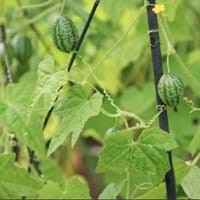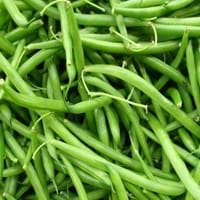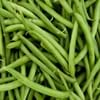Origin
Central America, Mexico
Central America, South America
Types
Slicing, Pickling and burpless
Golden Wax Bean, Romano bean
Habitat
Floodplains, Wet forest
Fields, orchards
USDA Hardiness Zone
7-8
Not Available
AHS Heat Zone
12-1
Not Available
Sunset Zone
A3, H1, H2, 1a, 1b, 2a, 2b, 3a, 3b, 4, 5, 6, 7, 8, 9, 10, 11, 12, 13, 14, 15, 16, 17, 18, 19, 20, 21, 22, 23, 24
A1, A2, A3, H1, H2, 1a, 1b, 2a, 2b, 3a, 3b, 4, 5, 6, 7, 8, 9, 10, 11, 12, 13, 14, 15, 16, 17, 18, 19, 20, 21, 22, 23, 24
Habit
Vining/Climbing
Vining/Climbing
Flower Color
Yellow, Gold
White, Pink, Lavender
Flower Color Modifier
Bicolor
Bicolor
Fruit Color
Green
White, Green, Dark Red, Tan, Black
Leaf Color in Spring
Light Green
Green, Purple, Dark Green
Leaf Color in Summer
Green, Dark Green
Green, Dark Green
Leaf Color in Fall
Green, Dark Green, Yellow green
Green, Dark Green
Leaf Color in Winter
Not Available
Not Available
Leaf Shape
Heart-shaped
Maple shaped
Plant Season
Summer, Fall
Spring, Summer, Fall
Sunlight
Full Sun, Partial Sun
Full Sun
Growth Rate
Very Fast
Fast
Type of Soil
Loam
Loam, Sand
The pH of Soil
Neutral
Neutral, Alkaline
Soil Drainage
Well drained
Well drained
Bloom Time
Early Summer, Summer, Late Summer, Early Fall, Indeterminate
Indeterminate
Tolerances
Drought
Drought
Where to Plant?
Container, Ground
Container, Ground
How to Plant?
Seedlings, Stem Planting
Seedlings
Plant Maintenance
Medium
Medium
Watering Requirements
Keep ground moist, Requires a lot of watering, Requires regular watering, Requires watering in the growing season
Do not let dry out between waterings, Use Mulches to help prevent water loss during hot and windy weather
In Summer
Lots of watering
Lots of watering
In Spring
Moderate
Moderate
In Winter
Average Water
Average Water
Soil pH
Neutral
Neutral, Alkaline
Soil Type
Loam
Loam, Sand
Soil Drainage Capacity
Well drained
Well drained
Sun Exposure
Full Sun, Partial Sun
Full Sun
Pruning
Prune after flowering, Remove shoots
Remove damaged leaves, Remove dead branches, Remove dead leaves
Fertilizers
Compost, organic fertlizers
All-Purpose Liquid Fertilizer
Pests and Diseases
Bacteria wilt, Fungal Diseases, fungus, Fusarium wilt, Leaf spot, Striped cucumber beetles
Not Available
Plant Tolerance
Cold climate
Drought
Flower Petal Number
Single
Single
Foliage Texture
Coarse
Coarse
Foliage Sheen
Matte
Matte
Attracts
Ants, Birds, Flying insects, Insects, Rats, Squirrels
Aphids, Birds, Butterflies, Caterpillar
Allergy
Throat itching, Vomiting
Diarrhea, Irritation to stomach
Aesthetic Uses
Showy Purposes
Not Available
Beauty Benefits
Not Available
Making cosmetics, Remove blemishes
Environmental Uses
Food for animals, Food for birds
Food for animals, No fertilizer, pesticides, or herbicides needed
Medicinal Uses
Antioxidants, Combats Stress, Fiber, Improve heart health, Indigestion, Inflammation, Rich in Iron
Acne, Diuretic, Emmoiliant, Menstrual Disorders
Part of Plant Used
Fruits, Seeds
Fruits
Other Uses
Used As Food, Used as Ornamental plant, Used for its medicinal properties
Animal Feed, Used as a nutritious food item
Used As Indoor Plant
Yes
Yes
Used As Outdoor Plant
Yes
Yes
Garden Design
Edible, Herb / Vegetable, Vine
Edible, Herb, Vegetable, Vine
Botanical Name
MELOTHRIA scabra
PHASEOLUS vulgaris
Common Name
Mexican Sour Gherkins, cucamelon
Green Beans
In Hindi
Mousemelon
फलियां
In German
Maus Melone
Bohnen
In French
Mousemelon
haricots
In Spanish
Mousemelon
Green Beans
In Greek
πεπόνι ποντίκι
φασόλια
In Portuguese
melão rato
feijões
In Polish
mysz melona
fasola
In Latin
mouse melon
fabam
Phylum
Tracheophyta
Spermatophyta
Class
Magnoliopsida
Magnoliopsida
Order
Cucurbitales
Fagales
Family
Cucurbitaceae
Fabaceae
Clade
Angiosperms, Eudicots, Rosids
Dicotyledonous
Tribe
Melothrieae
Not Available
Subfamily
Cucurbitoideae
Not Available
Number of Species
Not Available
Importance of Mouse Melon and Spring Beans
Want to have the most appropriate plant for your garden? You might want to know the importance of Mouse Melon and Spring Beans. Basically, these two plants vary in many aspects. Compare Mouse Melon and Spring Beans as they differ in many characteristics such as their life, care, benefits, facts, etc. Every gardener must at least have the slightest clue about the plants he wants to plant in his garden. Compare their benefits, which differ in many ways like facts and uses. The medicinal use of Mouse Melon is Antioxidants, Combats Stress, Fiber, Improve heart health, Indigestion, Inflammation and Rich in Iron whereas of Spring Beans is Acne, Diuretic, Emmoiliant and Menstrual Disorders. Mouse Melon has beauty benefits as follows: Not Available while Spring Beans has beauty benefits as follows: Not Available.
Compare Facts of Mouse Melon vs Spring Beans
How to choose the best garden plant for your garden depending upon its facts? Here garden plant comparison will help you to solve this query. Compare the facts of Mouse Melon vs Spring Beans and know which one to choose. As garden plants have benefits and other uses, allergy is also a major drawback of plants for some people. Allergic reactions of Mouse Melon are Throat itching and Vomiting whereas of Spring Beans have Diarrhea and Irritation to stomach respectively. Having a fruit bearing plant in your garden can be a plus point of your garden. Mouse Melon has showy fruits and Spring Beans has showy fruits. Also Mouse Melon is not flowering and Spring Beans is not flowering . You can compare Mouse Melon and Spring Beans facts and facts of other plants too.





